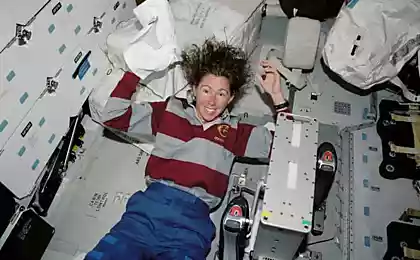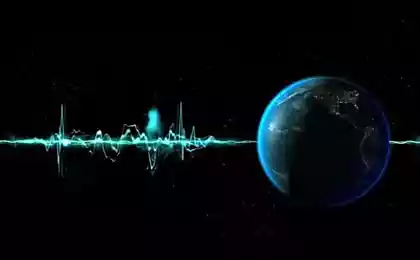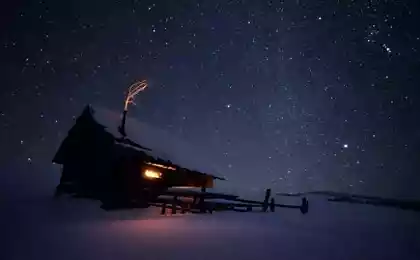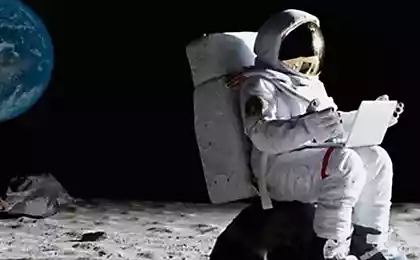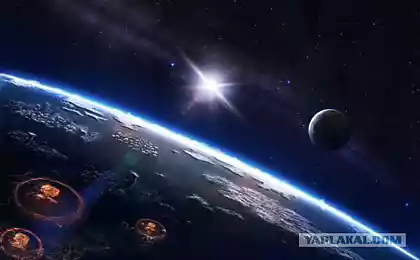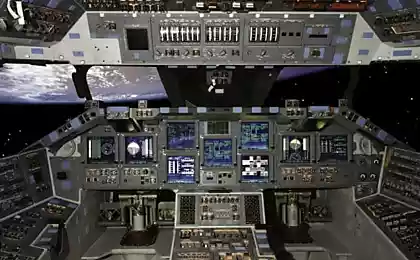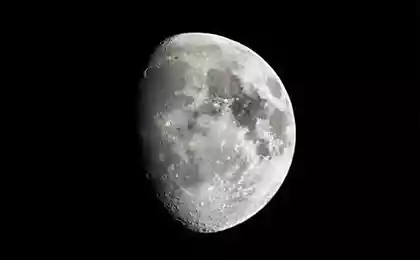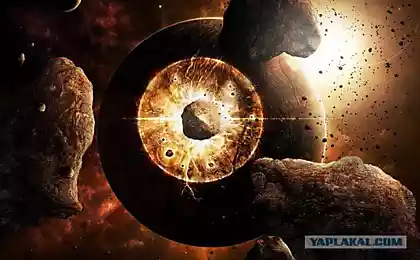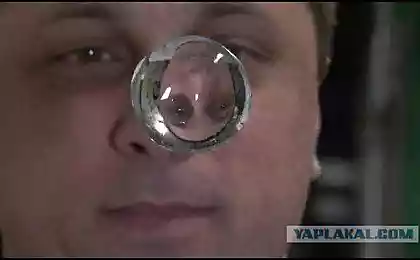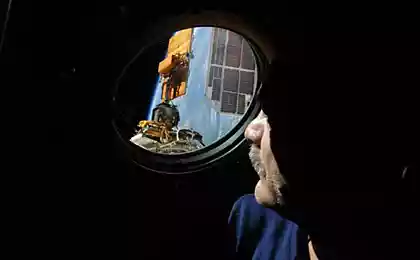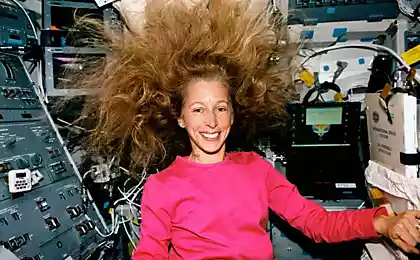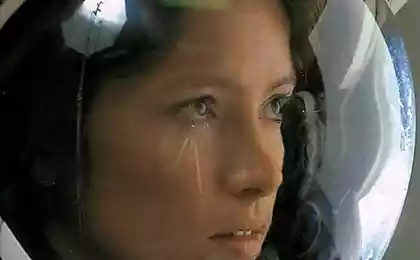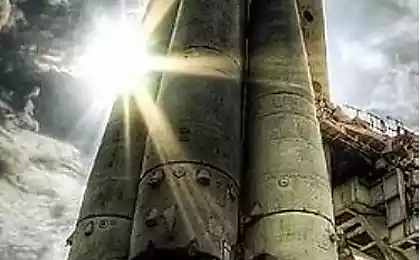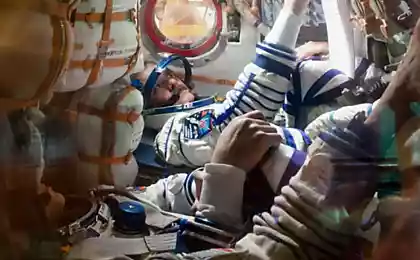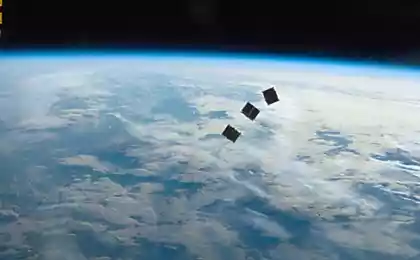928
Fresh of the cosmos
This Pictures of the collected images in any way connected with the cosmos that have been made over the last month or in space or from a
23 photos via bigpicture
1. The colorful wings of the planetary nebula NGC 6302, also known as the Butterfly Nebula, prostrated themselves in space. This photo taken July 27 and published on September 9 was one of the first images of the Hubble Space Telescope after renovation in May. (Hubble SM4 ERO Team / NASA, ESA)
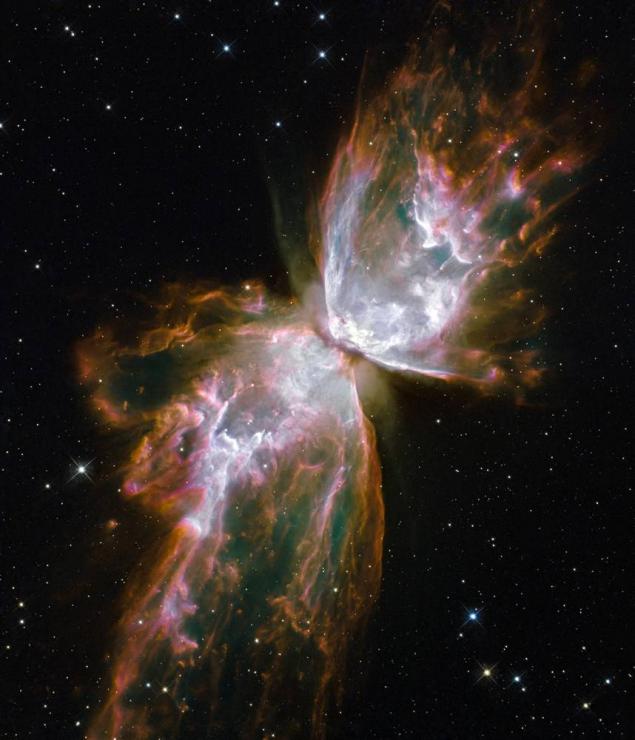
2. astronaut space shuttle "Discovery" John "Danny" Olivas works in bright light reflecting mirror surface of the International Space Station and golden solar panels on 1 September. In the background is seen the bright horizon of the earth. During the docking of the shuttle "Discovery" astronauts replaced the station tanks with a cooling liquid. (NASA via Reuters)
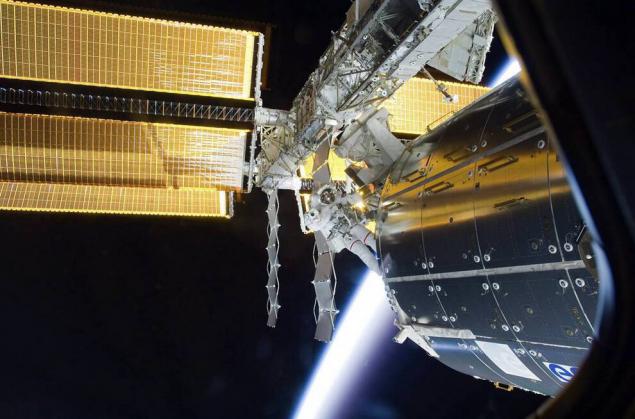
3. Cluster of galaxies known as Stephan's Quintet, shines in this picture, Hubble Telescope, published Sept. 9. Four galaxies are involved in a "gravitational dance"; it may seem that the fifth galaxy (upper left) is in line with them, but it is not - in fact, it is much closer to us. (NASA via EPA)
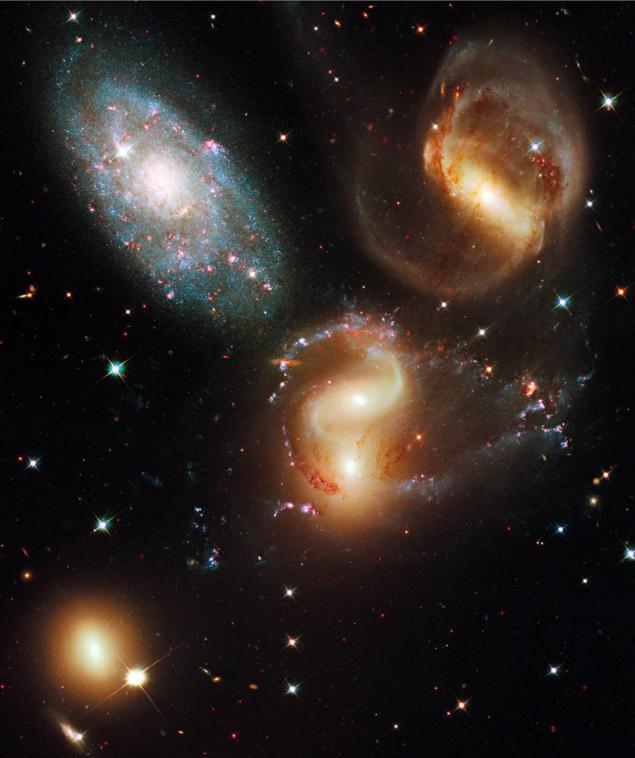
4. Hurricanes left the thin black marks that can be seen in this photo of the Martian dunes made from orbit. The picture was taken at a high resolution camera multifunctional automatic interplanetary station NASA in August and published on 16 of September. (NASA / JPL / University of Arizona)
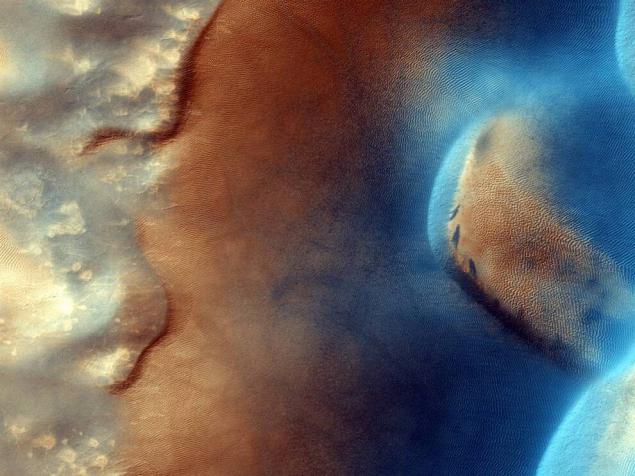
5. At the high-resolution images made by automatic interplanetary station NASA in April and published in September, shows a sawtooth pattern on dry Martian ice. (NASA / JPL / University of Arizona via Reuters)
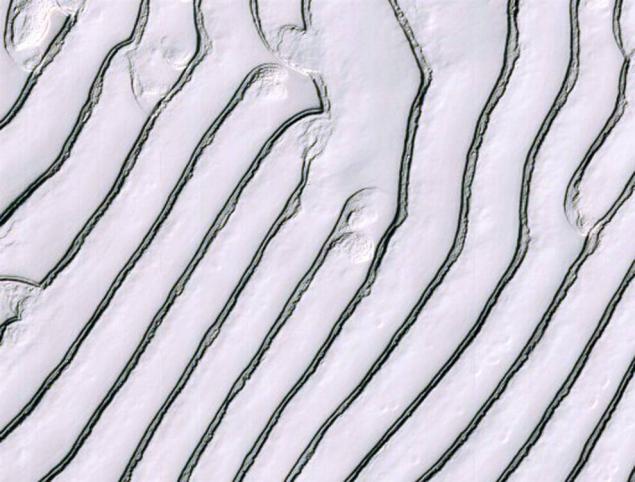
6. In this photo taken on September 24, NASA, the thick veil of dust comes from Queensland in northern Australia to New Zealand. Under the veil of the bottom of the picture, where brownish dust is mixed with gray-brown smoke from the fire, you can see the green-blue Great Barrier Reef. (Jeff Schmaltz / NASA via MODIS)
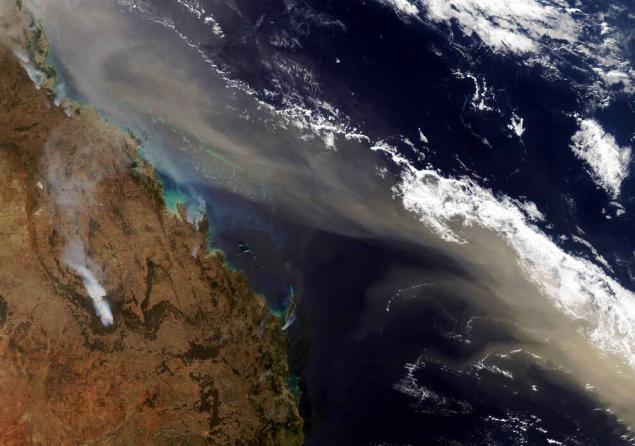
7. The gloomy picture of the birth of a new star Carina Nebula captured in this image taken with a wide-angle camera with the Hubble Space Telescope. The picture entered into a series of photos published on September 9, after the start of full operation after repair of the telescope. (NASA)
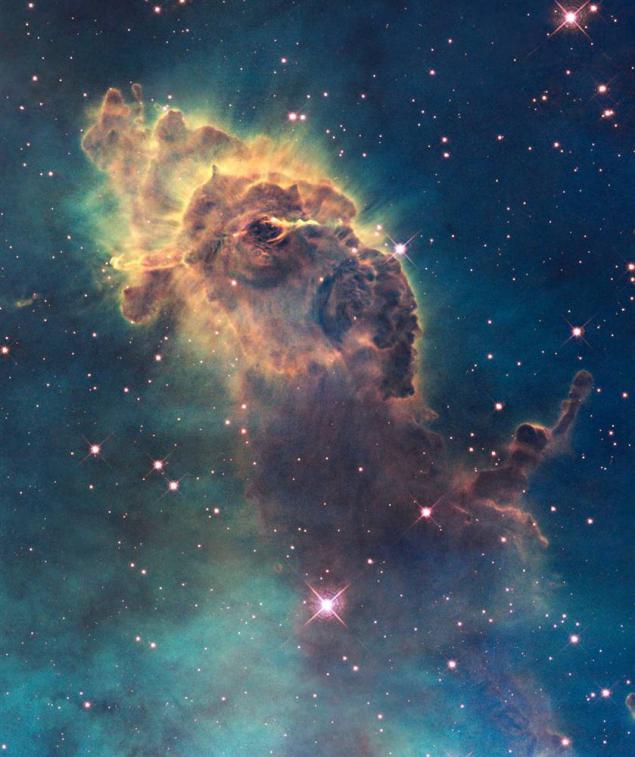
8. Laboratory of laser ranging to the Goddard Space Center in Maryland shoots a beam to the lunar orbiter, NASA in this image released September 24. The system determining the distance from the laser allows ground control centers to determine the exact location of the orbiter. (Tom Zagwodzki / Goddard Space Flight Center)
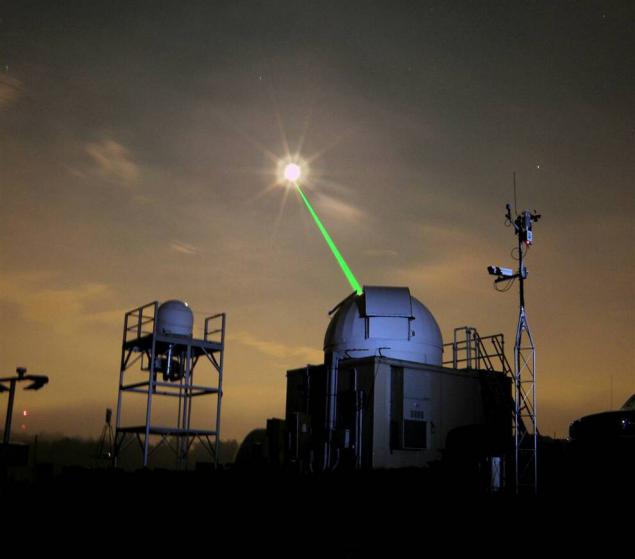
9. In this photo taken on September 7, the stars circling over the lighthouse near Uotkinsvillya, Georgia. (David Manning / The Athens Banner-Herald via AP)
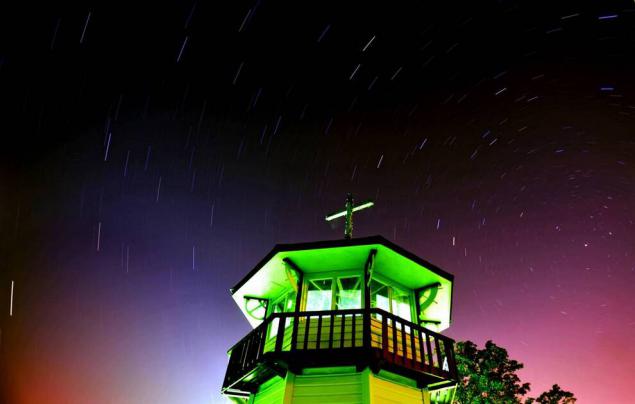
10. In this photo, published on September 21, the rings of Saturn almost merged with the darkness. The picture was taken orbital aircraft "Cassini" just after the equinox of the planet on August 11 when the rings edge-lit by the sun. During equinox, the rings have virtually no coverage. Next Equinox to happen in 2024. (JPL / Space Science Institute / NASA)
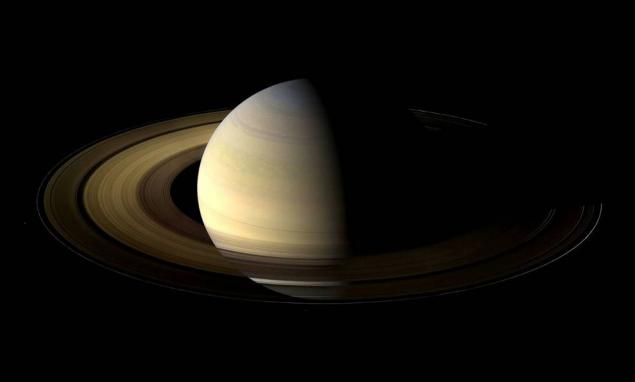
11. The members of the team "Jerboa» (Desert RATS) in space suits during field trials in mid-September, north of Flagstaff in Arizona. In the background - a prototype of a pressurized lunar rover electric. NASA tests equipment and technology for future space exploration during its annual program entitled "Research and study of technology in the wilderness." (NASA / D-RATS)
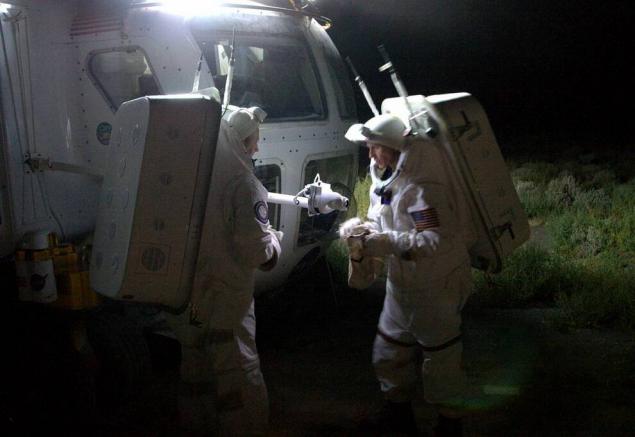
12. This image of the spiral galaxy NGC 6946, also known as the Fireworks Galaxy, it was a testing program Subaru team - a group of 10 students is not yet released in Japan. National Astronomical Observatory of Japan published this photograph on September 21 in honor of the 10th anniversary of the Subaru Telescope. (Subaru Observation Experience Program)
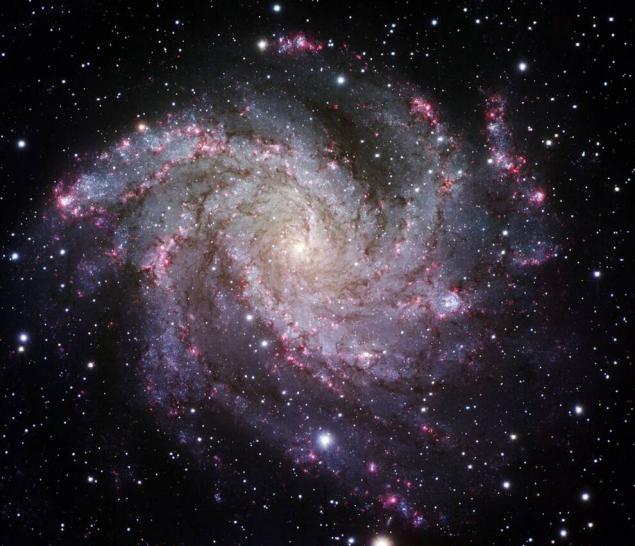
13. 30-centimeter base figure Svetsik from the cartoon "Toy Story" has returned to Earth aboard the space shuttle "Discovery" September 11 after spending 15 months on the International Space Station. During his tenure at the station the toy was used for a series of studies. (NASA via EPA)
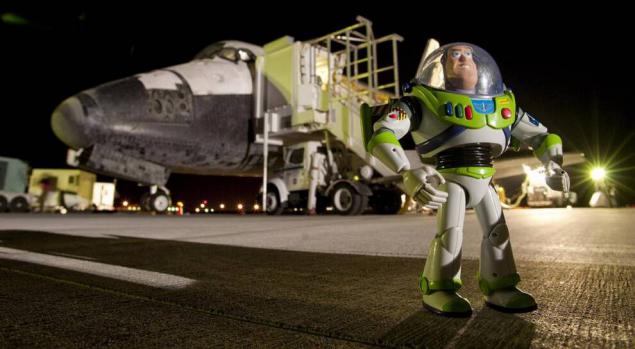
14. The vast cluster of stars known as the Trifid Nebula, shining in all its glory in this image made by the European Southern Observatory in northern Chile, and published on August 26. So named for the dark dust bands that divide flickering "heart" of the nebula into three parts, it is a rare combination of three nebula types. (ESO)
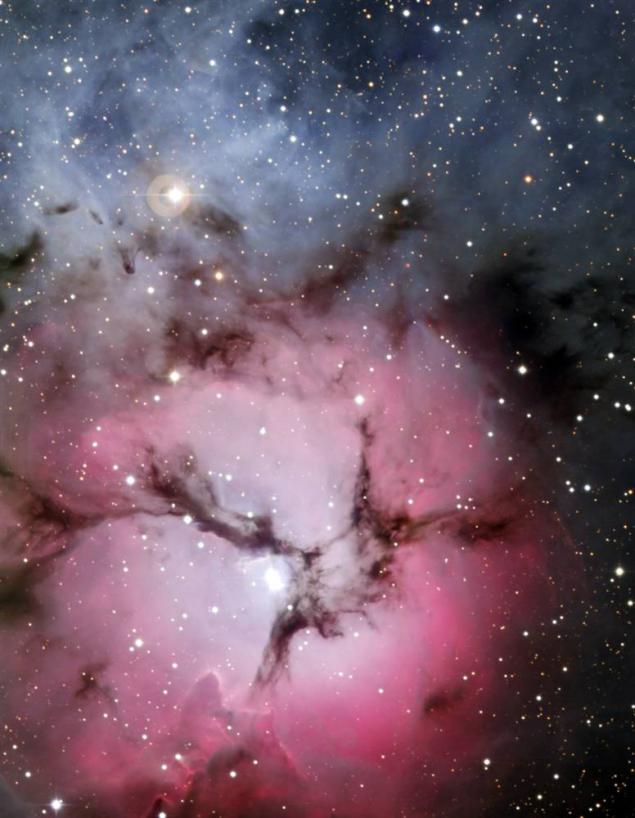
15. The Russian rocket "Soyuz" starts from the Baikonur Cosmodrome in Kazakhstan on September 30; An international team of astronauts aboard will fly to the International Space Station. The team "Union" includes NASA astronaut Jeffrey Williams, Russian cosmonaut Maxim Shur, the founder of the famous circus "Cirque du Soleil" Guy Laliberte in Canada. Laliberte paid for the space flight of $ 35 million. (Bill Ingalls / AFP - Getty Images)
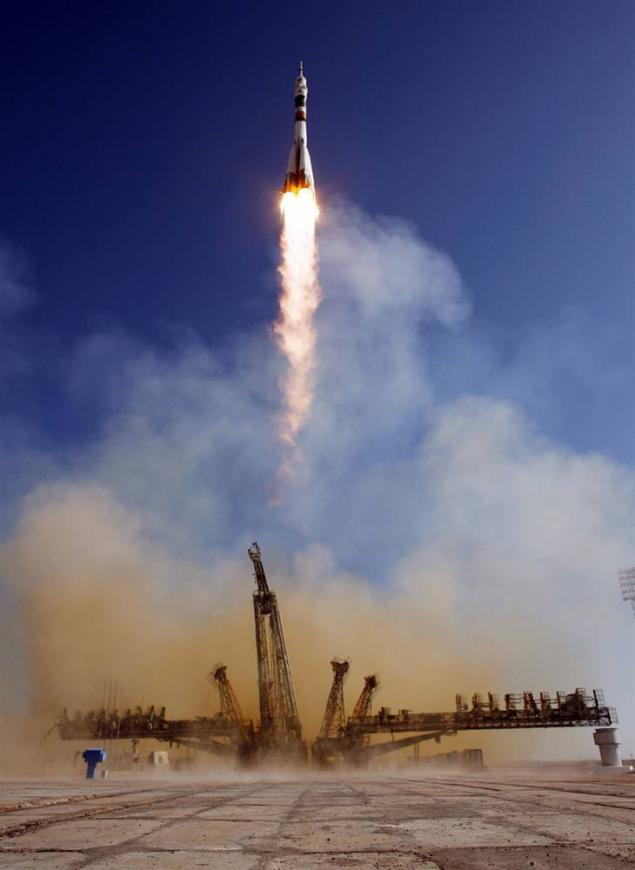
16. This image, published September 16, combines 330 individual photos of the galaxy M31, made an optical / ultraviolet telescope on board the spacecraft, NASA "Swift". This is the picture quality with high resolution ever done in the ultraviolet spectrum. (Stefan Immler and Erin Grand / NASA)
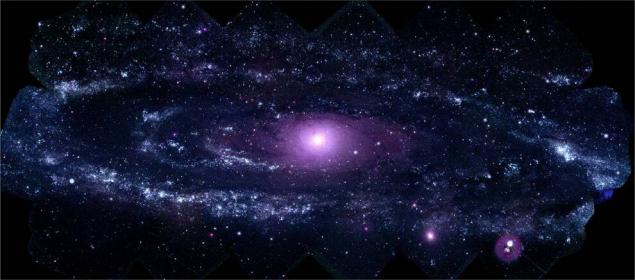
17. The satellite-distance communication NSS-12, shown here during testing antennas installed on it, has been delivered to the European spaceport in French Guiana in September. The satellite is to be brought on board the launch vehicle «Ariane 5" in October. (Space Systems / Loral / AP)
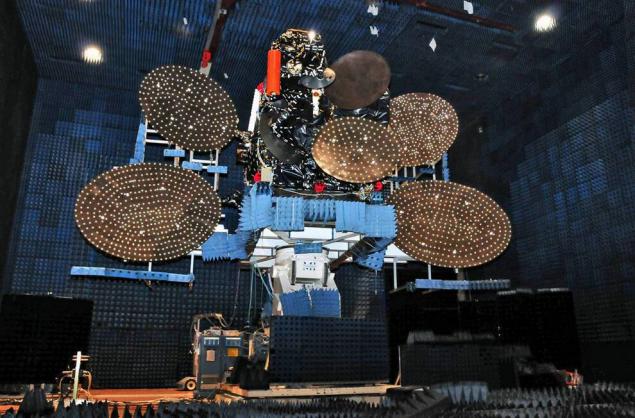
18. In this photograph of natural colors small glaciers flow into the predominantly dry valley in western Greenland. The picture was taken on August 29, and provided satellite NASA EO-1. (Ian Howat / Byrd Polar Research Center and TED)
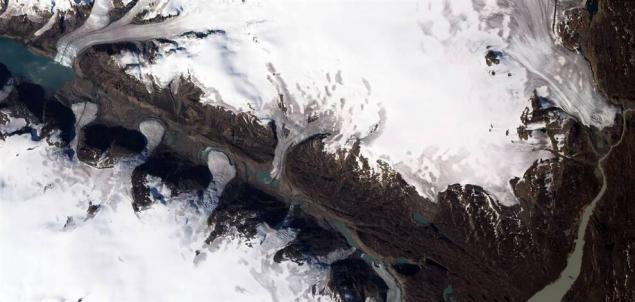
19. Apparatus «Scorpius» company «Armadillo Aerospace» takes off from the take-off site training in Texas on September 8. This flight helped «Armadillo» won the competition «Northrop Grumman Lunar Lander Challenge», which was the main prize of $ 1 million from NASA. (Armadillo Aerospace)
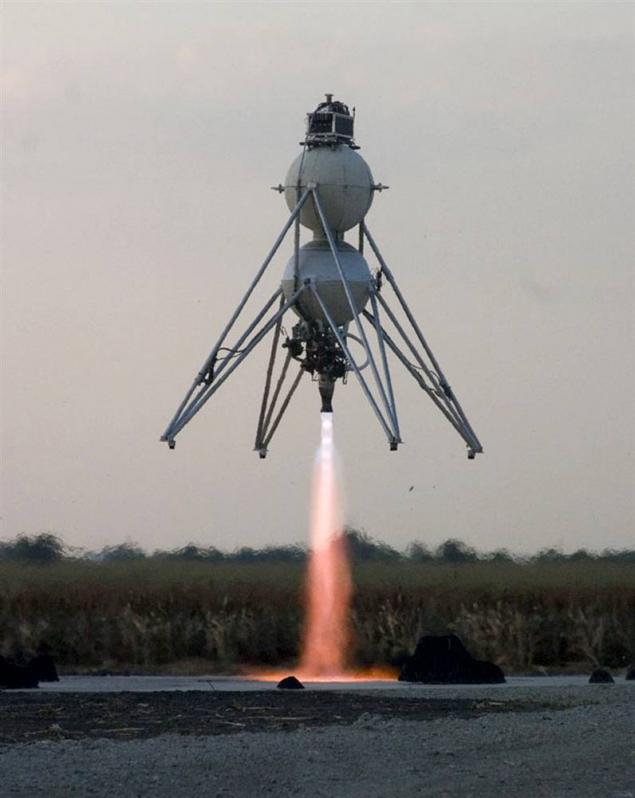
20. In this picture, taken from the spacecraft NASA «Mars Reconnaissance Orbiter», shows the bright spot of the plateau on Mars, known as the "main base". On the left you can see a bright white dot - a NASA rover «Spirit» in the 9 o'clock position. (JPL-Caltech / University of Arizona / NASA)
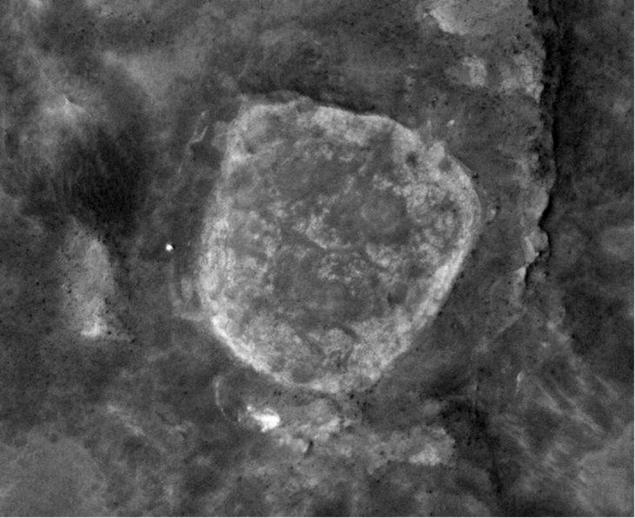
21. One of NASA's space probes «STEREO» noted two active spots on the solar disk, seen in the ultraviolet. Such areas (bright spots on top left) can be sent to Earth unfavorable flows of charged particles. (NASA / SOHO)
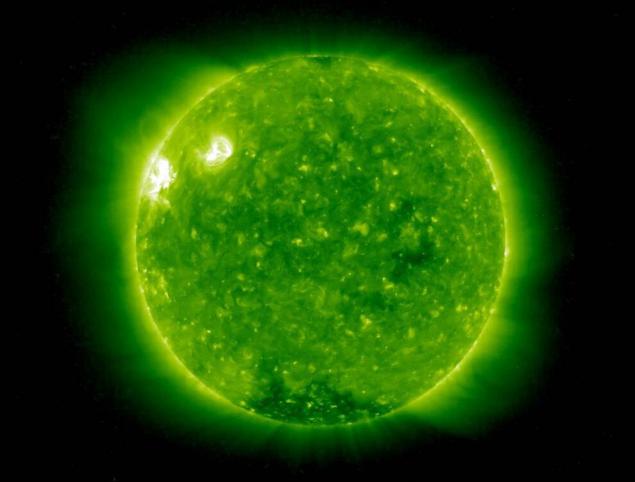
22. This picture taken by satellite «Envisat» European Space Agency, shows a variety of terrain, altitude and climate of Asia. Snow-covered Himalayan peaks mark the border between the Tibetan plateau in Central Asia (top) and the plains of Nepal, Bhutan and India in the Indian subcontinent (bottom). In this photograph in a distorted light green vegetation appears bright red. (ESA)
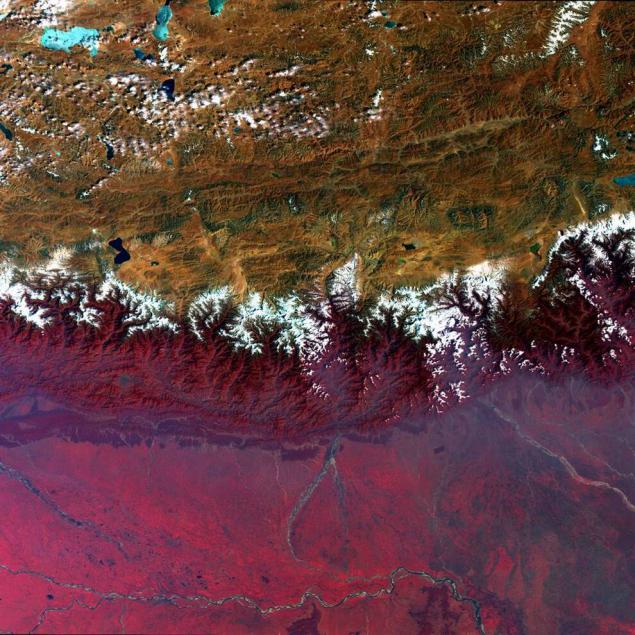
23. The picture of the satellite "Envisat" imprinted blue-green plankton size larger than that of Greece, had grown through the Barents Sea to northern Europe. "Envisat" took this picture August 19 through imaging spectroradiometer medium resolution (MERIS). The main purpose of MERIS is to provide quantitative measurements of ocean color. (ESA)
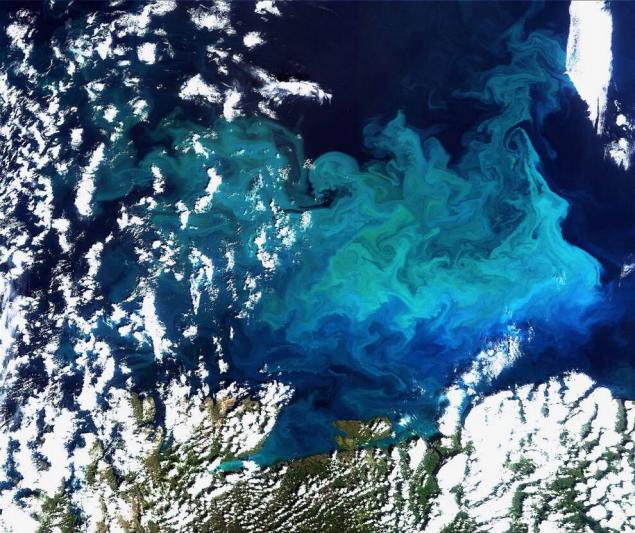
Source:
23 photos via bigpicture
1. The colorful wings of the planetary nebula NGC 6302, also known as the Butterfly Nebula, prostrated themselves in space. This photo taken July 27 and published on September 9 was one of the first images of the Hubble Space Telescope after renovation in May. (Hubble SM4 ERO Team / NASA, ESA)

2. astronaut space shuttle "Discovery" John "Danny" Olivas works in bright light reflecting mirror surface of the International Space Station and golden solar panels on 1 September. In the background is seen the bright horizon of the earth. During the docking of the shuttle "Discovery" astronauts replaced the station tanks with a cooling liquid. (NASA via Reuters)

3. Cluster of galaxies known as Stephan's Quintet, shines in this picture, Hubble Telescope, published Sept. 9. Four galaxies are involved in a "gravitational dance"; it may seem that the fifth galaxy (upper left) is in line with them, but it is not - in fact, it is much closer to us. (NASA via EPA)

4. Hurricanes left the thin black marks that can be seen in this photo of the Martian dunes made from orbit. The picture was taken at a high resolution camera multifunctional automatic interplanetary station NASA in August and published on 16 of September. (NASA / JPL / University of Arizona)

5. At the high-resolution images made by automatic interplanetary station NASA in April and published in September, shows a sawtooth pattern on dry Martian ice. (NASA / JPL / University of Arizona via Reuters)

6. In this photo taken on September 24, NASA, the thick veil of dust comes from Queensland in northern Australia to New Zealand. Under the veil of the bottom of the picture, where brownish dust is mixed with gray-brown smoke from the fire, you can see the green-blue Great Barrier Reef. (Jeff Schmaltz / NASA via MODIS)

7. The gloomy picture of the birth of a new star Carina Nebula captured in this image taken with a wide-angle camera with the Hubble Space Telescope. The picture entered into a series of photos published on September 9, after the start of full operation after repair of the telescope. (NASA)

8. Laboratory of laser ranging to the Goddard Space Center in Maryland shoots a beam to the lunar orbiter, NASA in this image released September 24. The system determining the distance from the laser allows ground control centers to determine the exact location of the orbiter. (Tom Zagwodzki / Goddard Space Flight Center)

9. In this photo taken on September 7, the stars circling over the lighthouse near Uotkinsvillya, Georgia. (David Manning / The Athens Banner-Herald via AP)

10. In this photo, published on September 21, the rings of Saturn almost merged with the darkness. The picture was taken orbital aircraft "Cassini" just after the equinox of the planet on August 11 when the rings edge-lit by the sun. During equinox, the rings have virtually no coverage. Next Equinox to happen in 2024. (JPL / Space Science Institute / NASA)

11. The members of the team "Jerboa» (Desert RATS) in space suits during field trials in mid-September, north of Flagstaff in Arizona. In the background - a prototype of a pressurized lunar rover electric. NASA tests equipment and technology for future space exploration during its annual program entitled "Research and study of technology in the wilderness." (NASA / D-RATS)

12. This image of the spiral galaxy NGC 6946, also known as the Fireworks Galaxy, it was a testing program Subaru team - a group of 10 students is not yet released in Japan. National Astronomical Observatory of Japan published this photograph on September 21 in honor of the 10th anniversary of the Subaru Telescope. (Subaru Observation Experience Program)

13. 30-centimeter base figure Svetsik from the cartoon "Toy Story" has returned to Earth aboard the space shuttle "Discovery" September 11 after spending 15 months on the International Space Station. During his tenure at the station the toy was used for a series of studies. (NASA via EPA)

14. The vast cluster of stars known as the Trifid Nebula, shining in all its glory in this image made by the European Southern Observatory in northern Chile, and published on August 26. So named for the dark dust bands that divide flickering "heart" of the nebula into three parts, it is a rare combination of three nebula types. (ESO)

15. The Russian rocket "Soyuz" starts from the Baikonur Cosmodrome in Kazakhstan on September 30; An international team of astronauts aboard will fly to the International Space Station. The team "Union" includes NASA astronaut Jeffrey Williams, Russian cosmonaut Maxim Shur, the founder of the famous circus "Cirque du Soleil" Guy Laliberte in Canada. Laliberte paid for the space flight of $ 35 million. (Bill Ingalls / AFP - Getty Images)

16. This image, published September 16, combines 330 individual photos of the galaxy M31, made an optical / ultraviolet telescope on board the spacecraft, NASA "Swift". This is the picture quality with high resolution ever done in the ultraviolet spectrum. (Stefan Immler and Erin Grand / NASA)

17. The satellite-distance communication NSS-12, shown here during testing antennas installed on it, has been delivered to the European spaceport in French Guiana in September. The satellite is to be brought on board the launch vehicle «Ariane 5" in October. (Space Systems / Loral / AP)

18. In this photograph of natural colors small glaciers flow into the predominantly dry valley in western Greenland. The picture was taken on August 29, and provided satellite NASA EO-1. (Ian Howat / Byrd Polar Research Center and TED)

19. Apparatus «Scorpius» company «Armadillo Aerospace» takes off from the take-off site training in Texas on September 8. This flight helped «Armadillo» won the competition «Northrop Grumman Lunar Lander Challenge», which was the main prize of $ 1 million from NASA. (Armadillo Aerospace)

20. In this picture, taken from the spacecraft NASA «Mars Reconnaissance Orbiter», shows the bright spot of the plateau on Mars, known as the "main base". On the left you can see a bright white dot - a NASA rover «Spirit» in the 9 o'clock position. (JPL-Caltech / University of Arizona / NASA)

21. One of NASA's space probes «STEREO» noted two active spots on the solar disk, seen in the ultraviolet. Such areas (bright spots on top left) can be sent to Earth unfavorable flows of charged particles. (NASA / SOHO)

22. This picture taken by satellite «Envisat» European Space Agency, shows a variety of terrain, altitude and climate of Asia. Snow-covered Himalayan peaks mark the border between the Tibetan plateau in Central Asia (top) and the plains of Nepal, Bhutan and India in the Indian subcontinent (bottom). In this photograph in a distorted light green vegetation appears bright red. (ESA)

23. The picture of the satellite "Envisat" imprinted blue-green plankton size larger than that of Greece, had grown through the Barents Sea to northern Europe. "Envisat" took this picture August 19 through imaging spectroradiometer medium resolution (MERIS). The main purpose of MERIS is to provide quantitative measurements of ocean color. (ESA)

Source:


